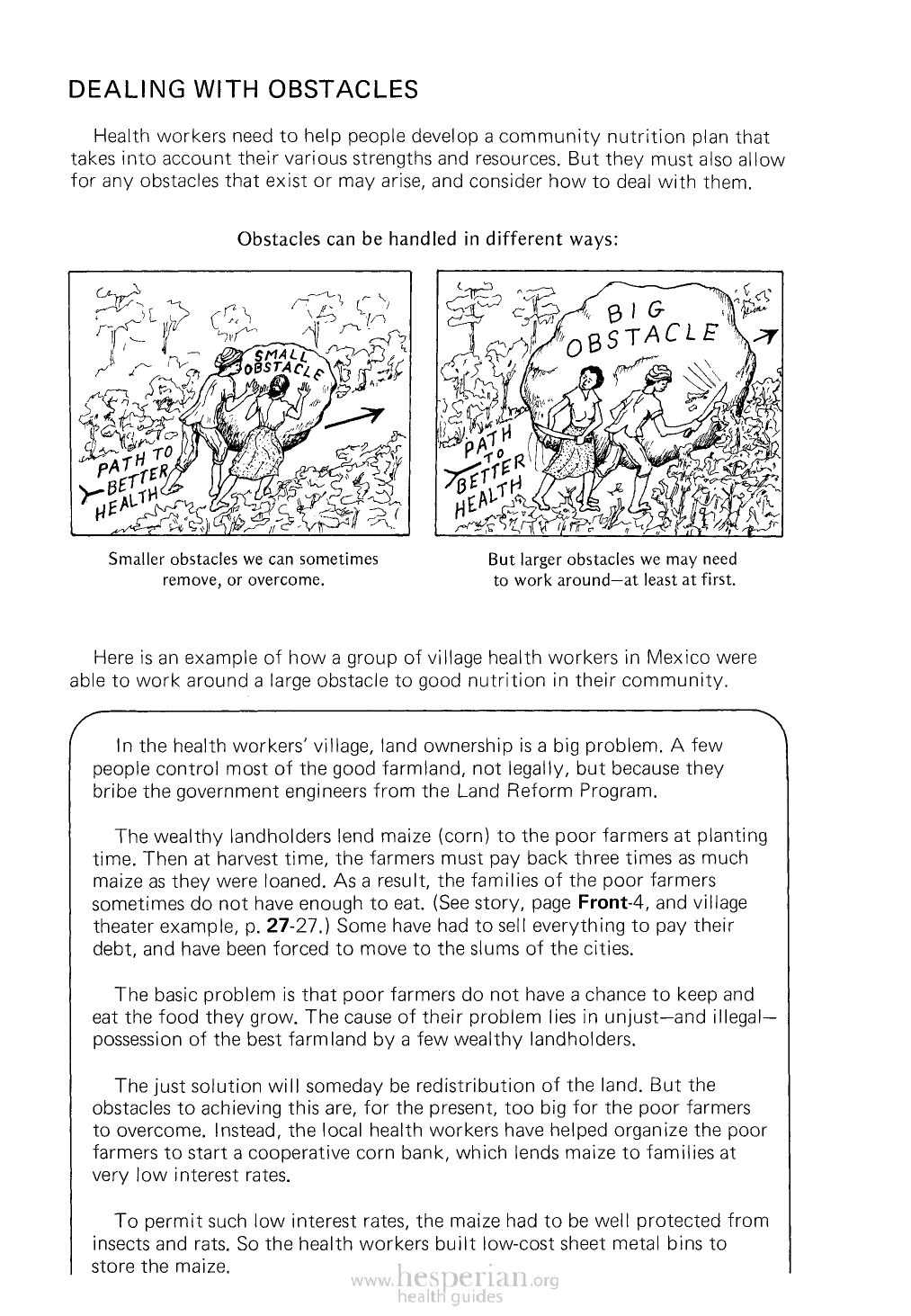
25-26
DEALING WITH OBSTACLES
Health workers need to help people develop a community nutrition plan that takes
into account their various strengths and resources. But they must also allow for any
obstacles that exist or may arise, and consider how to deal with them.
Obstacles can be handled in different ways:
Smaller obstacles we can sometimes
remove, or overcome.
But larger obstacles we may need
to work around—at least at first.
Here is an example of how a group of village health workers in Mexico were able
to work around a large obstacle to good nutrition in their community.
In the health workers’ village, land ownership is a big problem. A few people
control most of the good farmland, not legally, but because they bribe the
government engineers from the Land Reform Program.
The wealthy landholders lend maize (corn) to the poor farmers at planting
time. Then at harvest time, the farmers must pay back three times as much
maize as they were loaned. As a result, the families of the poor farmers
sometimes do not have enough to eat. (See story, page Front-4, and village
theater example, p. 27-27.) Some have had to sell everything to pay their debt,
and have been forced to move to the slums of the cities.
The basic problem is that poor farmers do not have a chance to keep and
eat the food they grow. The cause of their problem lies in unjust—and illegal-
possession of the best farmland by a few wealthy landholders.
The just solution will someday be redistribution of the land. But the
obstacles to achieving this are, for the present, too big for the poor farmers
to overcome. Instead, the local health workers have helped organize the poor
farmers to start a cooperative corn bank, which lends maize to families at
very low interest rates.
To permit such low interest rates, the maize had to be well protected from
insects and rats. So the health workers built low-cost sheet metal bins to
store the maize.